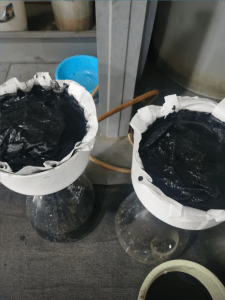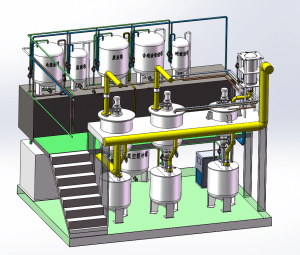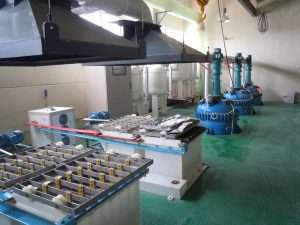Call us now:
Anode sludge refining is a residue containing aluminum, carbon, fluorine and other impurities separated from the electrolytic aluminum solution, and is generally refined by two methods: fire and wet.
Fire refining: Through oxidation and reduction reactions at high temperature, the useful substances in anode mud are separated out. There are mainly the following methods of fire refining:
Oxygen oxidation method: Reacting the anode mud with oxygen at high temperature, making the carbon and fluorine elements in the anode mud be oxidized and decomposed to get gaseous fluorine gas and carbon dioxide, and at the same time reducing the material containing aluminum to aluminum metal.
Aluminum chloride reduction method: Reacting the anode mud with aluminum chloride at high temperature, producing aluminum metal and gaseous chlorine gas, while reducing the carbon element to a solid product called carbon chloride.
Wet refining: The useful substances in the anode mud are separated out through chemical reactions, of which the most commonly used method is fluorination. The specific steps are as follows:
Soaking the anode sludge in hydrofluoric acid makes the fluoride ions combine with aluminum ions to form aluminum fluoride.
The aluminum fluoride is reduced at high temperature to obtain aluminum metal and fluorine gas. The advantage of wet refining over fire refining is that the reaction conditions are relatively mild and the fluoride can be recycled.
In addition to thermal and wet methods, there are several other methods of anode slime refining, including
High-temperature carbothermal method: Reacting anode slime with carbon material at high temperatures in a furnace, allowing the useful elements in the anode slime to be reduced to produce aluminum metal and a solid product containing carbon.
Molten salt electrolysis method: The anode mud is placed in high temperature molten salt, and the useful elements in the anode mud are separated out through the electrolysis process. This method has the advantages of high efficiency and energy saving, but requires high temperature molten salt and specialized equipment.
It should be noted that the anode mud refining process generates a large amount of hydrogen fluoride gas, which is harmful to the environment and human health. Therefore, the refining process needs to be carried out in an enclosed facility with appropriate safety measures.
In addition, the refining of anode sludge is a complex process that needs to be optimized in practice according to the actual situation. Different types of anode mud have different compositions and properties, and the applicable refining methods and conditions will vary.
In practical application, refining cost and environmental protection issues also need to be taken into consideration. Some new anode mud refining techniques and technologies are being researched and developed, aiming to improve refining efficiency, reduce costs and reduce environmental pollution.
Translated with www.DeepL.com/Translator (free version)


